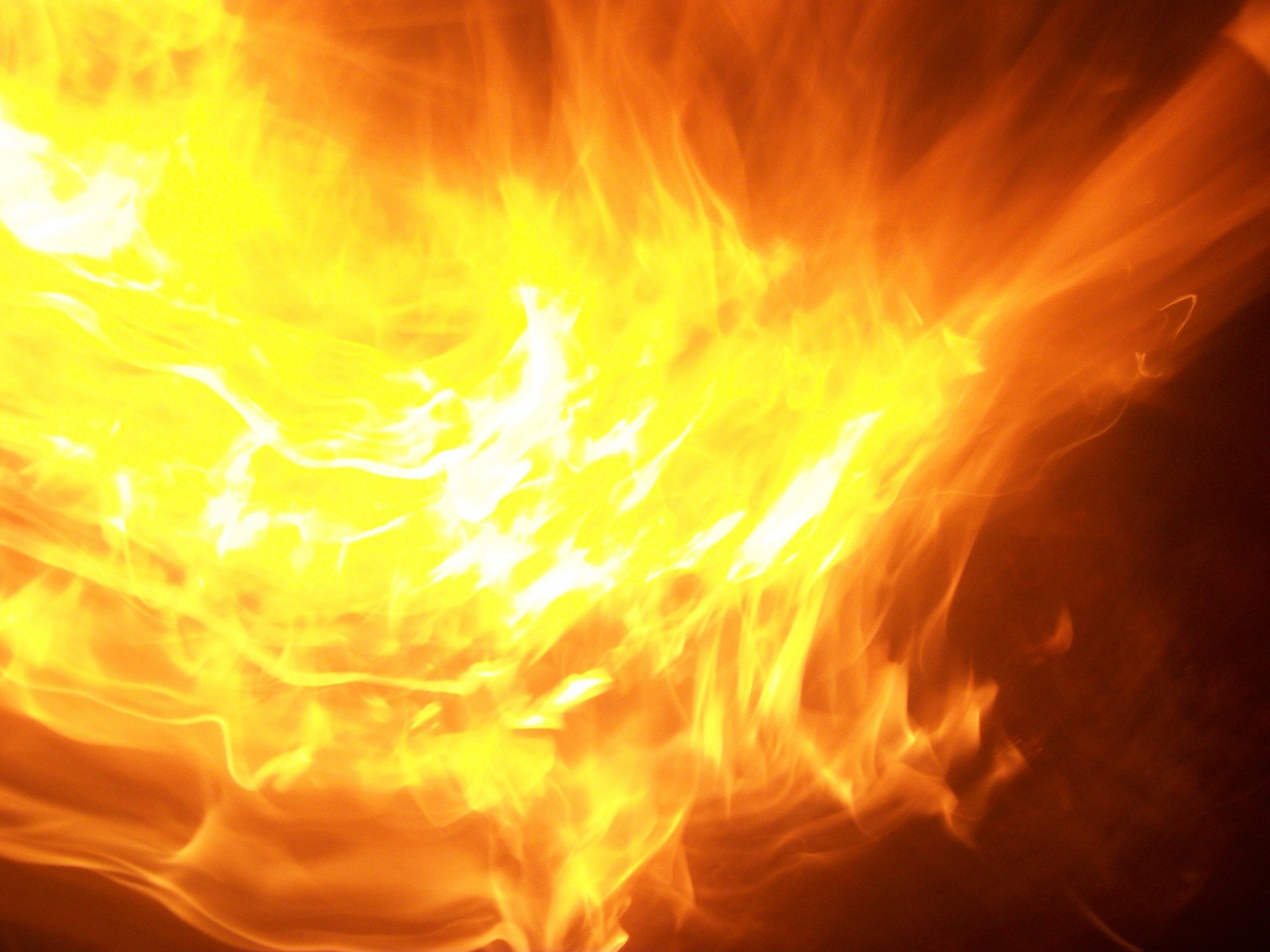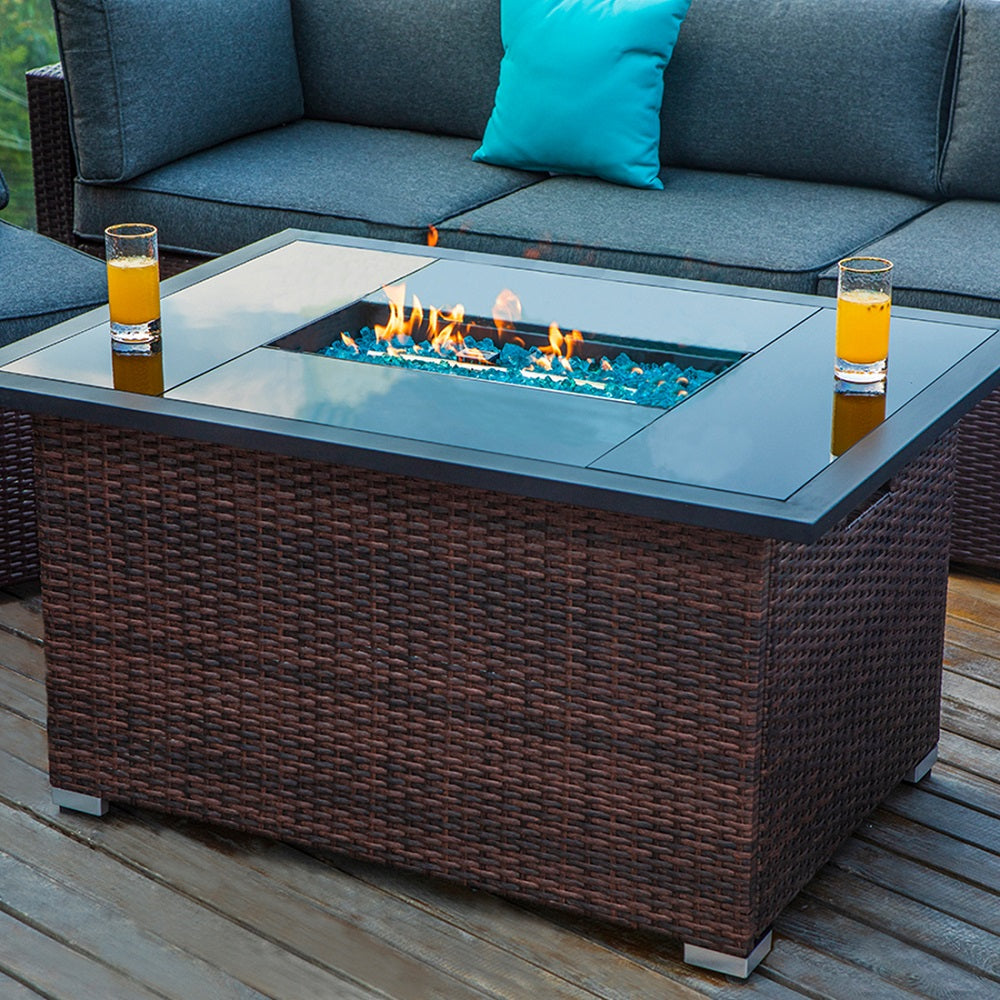An outdoor space is a precious area to many homeowners as it provides a different atmosphere and comfort from the indoor space. There are many accessories that you can include in an outdoor space, from furniture, plants, and entertainment equipment, to a fire pit. This will depend on the area that you’re working with and the theme you’re looking to execute.
There’s nothing as precious as sitting around a fire pit in winter. From the flames to the heat, it’s an unmatched vibe that every homeowner wishes to experience. This is what influences many to install one. A outdoor fire pit offers the homeowner several benefits such as;
- Providing a multi-season space
- Adding ambiance
- Provides entertainment
- It offers a cooking tool
- Promotes warmth and cuddling
- Giving the right amount of light
- Increases the value of the patio.

So how much do you know about outdoor patio fire pits? There are different types of fire pits, and they come in various shapes, designs, and sizes. One common variety of these accessories is a fire pit BTU.
But what is this kind, anyway?
What is a BTU?
BTU (British Thermal Unit) is described as the quantity of thermal or heat energy needed to increase or reduce the temperature of a single pound of water by a degree Fahrenheit (at sea level). Technically, BTUs can explain heating and cooling elements, but it dominantly focuses on the heat output.
There are multiple heating elements, such as propane, electricity, ethanol, and natural gas. BTU output is usually numbered in thousands. Ideally, the higher the numbers, the warmer you’ll feel from your fire pit feature. 1 BTU is significant to the heat produced by a single candle, a 1500-watt floor produces approximately 5000 BTUs of heat, a portable patio heater gives out 40,000 BTUs, and a medium-sized fire pit emits an average of 90,000 BTUs.
The Correlation Between BTU and Flame Height and Color

One prevalent concern for many homeowners is BTU relation to flame height and color. BTUs affect the flame height and appearance to some degree. Typically, BTU output is directly proportional to the flame height, but other factors also affect that.
Some of the other factors that affect the flame height and color include;
- The amount of primary air mixed with gas before it’s burned. The more primary air, the bluer and shorter your flame will become. This will also produce a higher temperature and cleaner flame. You can add more primary air by opening the air shutter at the orifice location.
- Size of the gas lines and orifices. If all other factors are held constant, a larger orifice hole triggers more BTUs to the burner, affecting the flame height and color.
- Gas pressure. When all other factors are the same, higher gas pressure will also affect the flame height and color as there will be more BTUs to the burner.
- Different heating elements affect the flame height and color. For instance, natural gas has less BTUs per cubic foot than liquid propane.
- The distance between your fire from the fuel source.
- The fire media and its layout.
Which Fire Pit is Best for Your BTU Needs?
There are different types of fire pits for your BTU needs. Their different requirements and heat output will determine the best one for you. You’d also want to consider their installation and maintenance needs before opting for one, as some will serve you longer and better than others.
The different fire pits include;
Wood Fire Pit

Wood fire pits are the most common type, producing an average of 30,000 to 100,000 BTUs. They have a typical traditional design and vibe to your outdoor space. They create a warm and cozy environment ideal for people of all ages. Wood fire pits have bright flames that lick against the night sky, and they also produce crackling sounds as the elements burn. They are ideal for a backyard with enough space since some smoke might be emitted from the fire.
Propane Fire Pit
A propane fire pit is advanced compared to wood or charcoal fire pits. Outdoor propane fire pits use propane gas as the burning element and produce an average of 40,000 to 150,000 BTUs. They are the warmest and most efficient fire pits as they can be ideal for freezing winters when you need that warmth in your outdoor space.
Propane fire pits are made of magnesium oxide, sealed with stainless steel to conserve heat, and coated with wicker material for the perfect finishing. They are available in different shapes, and you can buy round, square, rectangle, or column ones.
COSIEST offers different types of this product, including a square propane fire pit and a round propane fire pit. It would be best if you typically went for one that will fit your outdoor space and the entire furniture alignment in your patio.
Outdoor propane fire pits are more similar to portable grills than your typical campfire. They are advanced and offer the technicalities required to adjust your flames effectively according to your needs. They also come with different designs and are simple to install, and have minimal maintenance as they are durable investments. They are ideal for warmth and coziness.
Natural Gas Fire Pit

Natural gas fire pits are the modern approach to outdoor fire pits. They produce an average of 30,000 to 60,000 BTUs, and they are ideal for both heating and cooking. These types of fire pits are fueled by natural gas, and they are highly portable due to their size. This allows them to be flexible enough as you can install them on patios, backyards, or balconies, as space isn’t a significant factor.
Determining the Amount of BTUs Needed in Your Fire Pit
So how do you determine how many BTUs are required for your fire pit? Essentially, this is a subjective question as everyone has their heating preferences and feels warm at various temperatures. Additionally, multiple factors will impact how warm you’d feel around your installed outdoor fire pit, including;
- Your proximity to the fire pit
- Your regional climate
- The type of fire pit installed
- Whether your outdoor space is open or enclosed
- How windy your location is.
This makes an outdoor propane fire pit ideal as it has a BTU output of 40,000 to 150,000, which is quite a wide range for different heat needs and suitable for many climatic conditions.
Outdoor Fire Pit and Fire Pit Table
There’s a significant difference between a fire pit and a fire pit table, and many people often miss that mark.
An outdoor fire pit can be as basic and simple as a hole dug in the ground where you place your fire elements and get the flames burning. This is where kids can typically toast their marshmallows and enjoy the outdoor vibe.
An outdoor fire pit table is an advanced structure that presents more architectural statements from its design to the alignment. It’s on a raised platform as it resembles a table, unlike the counterpart, which is dug in the ground. There are many design variations, and its functionality is majorly for providing heat in your outdoor space.
Outdoor patio fire pits can be isolated pieces in your backyard as they majorly are meant for cooking than heating. They can accommodate many individuals, and sitting structures are further from the heat source. However, patio fire pit tables are intimate pieces that provide a warming atmosphere for small groups to gather closely together for a good time.
Types of Fire Pit Media
A complete fire pit is made up of different parts.
Lava Rock

Lava rocks provide a semipermeable barrier that protects the fire pit burner from the burning elements. It’s a clean, durable, low-maintenance, and natural-looking outdoor fire pit surface media that retains the natural color under harsh weather and high heat.
Fire Glass

Also known as fire pit glass, fire glass is made from tempered glass and is manufactured to withstand extreme temperatures and harsh weather without discoloration or to sustain any damage. Fire glass doesn’t emit smoke, ash, harmful chemicals, or soot. It also has little to no maintenance costs, as simply rinsing it with water and vinegar mix is enough.
They are both beautiful and efficient as you can use them to cover the whole floor of the fire pit and hide any tubes and pipes often visible on these fixtures. They come in a variety of colors, including black and champagne. Copper, gold, pacific blue, azure, bronze, cobalt, evergreen, gray, platinum, and Starfire. There are different types of fire glass, including;
- Premium fire glass
- Classic fire glass
- Pre-mixed fire glass
- Fire glass 2.0
- Fire pit glass
- Fire beads
- Zircon fire glass.
Ceramic Logs
Ceramic logs are made from ceramic fiber that radiates heat and glows. You can place these logs in many different types of fire pit spaces. They pipes will pump invisible gas through the holes and the logs. When you ignite the gas logs, they will burn and produce a steady flame. They are the foundation for the fire and provide a realistic and beautiful fire.
Wood
Wood is the primary fuel for fire pits and sets the tone of the fire as they dictate how harsh it’ll burn and control the flame. They are the topmost part of the set on top of the ceramic logs. The best types of wood for your fire pit include ash, beech, cherry, maple, oak, pine, green wood, and driftwood.
Fire Pit Fuel
All fires require fuel, and that goes for your outdoor patio fire pit as well. For efficient results, you’ll want to ensure that you use highly efficient fire pit media to burn well and give off heat. So which are the different types of fire pit media available? Wood, propane gas, natural gas, and bio-ethanol and the best fuel for your fire pit.
Positioning Your Fire Pit
Positioning your fire pit is vital regardless of how many BTUs it has or the kind of fuel you’re using. It would be safe if you always place your fire pit in an open area free from structures or stray debris. This is to prevent any flickering flame from causing a catastrophe. You should have it at least 15 feet away from any structures.
Choosing an outdoor fire pit, BTU, is an exercise that requires attention and much consideration as there are many factors to consider. It would be best if you always chose the outdoor fire pit that is ideal for your outdoor space and one that you can easily maintain. Invest in quality fire pit media and fire pit fuel for ultimate results and the best flame height and color. Always consider the BTUs you’d require to make the best choice.


